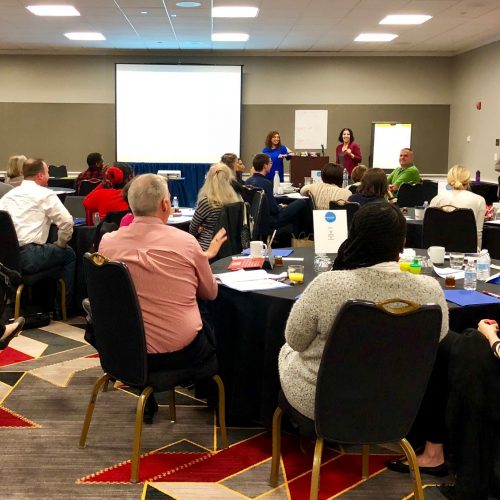Our founder Stewart Bainum firmly believed that every child deserves a quality education and an equal chance at success, and this belief is at the core of everything we do. And because of his upbringing and educational experience, Mr. Bainum had a particular passion — faith-based education and giving back to the Seventh-day Adventist (SDA) community. To honor his legacy and connect these two commitments, the Foundation’s Seventh-day Adventist Initiative works to strengthen SDA schools and expand the availability of high-quality learning environments for infants, toddlers, children and youth. One part of this work includes developing and implementing an Instructional Framework for 21st-Century Educators.
What is the Instructional Framework?
The Instructional Framework establishes a research-based scope and sequence for teaching English/Language Arts content. It clearly articulates learning expectations related to student content and skill mastery from kindergarten through eighth grade. To best instruct and support the whole child, it is aligned with the Common Core Standards and integrates Partnership for 21st Century skills and the Collaborative for Academic, Social, and Emotional Learning competencies. The Instructional Framework uses the rigorous standards from Common Core, focusing specifically on Reading Foundational Skills, Reading Literature, Reading Informational Text, Writing, Language and Speaking and Listening Skills. It is intended to not only provide teachers with unified nationwide grade-level expectations, but also demonstrate how these expectations build upon each other with each progressing school year.
The Instructional Framework is not designed to replace any curriculum. Instead, it is meant to enhance the existing practices and equip teachers to plan and deliver standards-based instruction. Lesson seeds and models of quality lesson plans are included to serve as examples for teachers, but the Instructional Framework provides and promotes autonomy for planning individual lessons aligned to specific learning targets and student needs. Resources such as Instructional Strategies for Diverse Learners are included in the Instructional Framework to provide research-based strategies that promote the 4Cs of 21st Century Learning (communication, collaboration, critical thinking and creativity) while also encouraging different means of learning through modes of representation, expression and engagement.
What Have We Accomplished So Far?
While developing the Instructional Framework, we worked side-by-side with Seventh-day Adventist educators — meeting quarterly with local teachers, Conference members and other key leaders to continually receive and incorporate their feedback and expertise.
In 2014, we partnered with an SDA school in Hyattsville, Maryland, to launch a two-year pilot of the Instructional Framework. The pilot involved five grade levels: kindergarten, first grade, third grade, fourth grade and sixth grade. For both years across all grade levels, the qualitative and quantitative data we recorded pointed to one key finding — the Instructional Framework is a powerful and effective tool. According to the data, students taught with the Instructional Framework:
- Were more actively engaged in learning
- Expanded their overall vocabulary
- More effectively collaborated and communicated with each other
- Better transferred learning, using cross-curricular connections to establish deeper understanding
Teachers, the data suggested, also experienced significant benefits, as they were better able to focus and plan to the standards as well as monitor learning. Teachers reported that the Instructional Framework simplified planning and helped them collaborate and coordinate across subject areas, ultimately better serving their students.
“The Framework provided a whole dimension of learning,” said one teacher. “I had the direction, so from there I could create activities. If they didn’t work, I could come up with something else that would teach the standard. It made me more intentional and active in my planning.”
“I want to make sure my students master what they are supposed to before I move on,” said another teacher. “With the Framework, I now take more time to make sure my activities match my learning targets.”
I’ve spent the past four years developing the Instructional Framework, managing other contributing writers and incorporating updates reflecting the latest research and feedback from our stakeholders. Seeing its positive impact firsthand has been incredibly rewarding. The Foundation takes a systems approach to achieve lasting high quality across all of its initiatives — and I’m proud to play a part in building something that will serve and strengthen students, teachers and schools across the SDA educational system.





